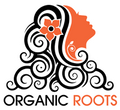✨ Introduction: The Hair Dye Dilemma
Hair coloring is one of the most popular beauty practices worldwide. But when it comes to choosing between chemical hair dyes and natural dyes like henna and indigo, the science behind how they work makes a big difference.
Synthetic dyes rely on small dye precursors and chemical couplers, while natural dyes use plant pigments and natural boosters. Let’s break down what this means for your hair, scalp, and overall health.
🧪 What Are Chemical Dye Precursors and Couplers?
-
Small dye precursors are tiny, colorless molecules (like PPD or toluene-2,5-diamine).
-
They penetrate deep into the hair shaft.
-
When combined with couplers and oxidizers (like hydrogen peroxide), they form larger artificial dye molecules inside the hair cortex.
👉 Result:
-
Strong, long-lasting color with a wide shade range.
-
But… these reactions can damage the hair cuticle, weaken strands, and irritate the scalp.
🍃 Natural Dyes: How Henna and Indigo Work
Unlike chemical dyes, henna (lawsone pigment) and indigo (indigotin pigment) don’t rely on synthetic precursors or couplers.
-
Henna binds to keratin, giving reddish tones and strengthening hair.
-
Indigo attaches after henna, providing dark brown to black tones.
-
Together, they create natural shades without harsh chemical reactions.
👉 Result:
-
Thicker, shinier, naturally conditioned hair.
-
No peroxide, no ammonia, no damage.
🌿 Natural Boosters: The Gentle Alternative to Couplers
Since henna and indigo don’t use synthetic couplers, they rely on natural boosters to enhance color and stability:
-
Amla Powder → gives cooler brown tones, prevents overly bright red.
-
Salt → helps indigo bond better to hair.
-
Acidic mediums (lemon juice, apple cider vinegar, hibiscus tea) → improve henna dye release and bonding.
-
Herbal infusions (coffee, clove, tea) → temporarily deepen tones.
👉 Difference:
-
Chemical Couplers: Create new molecules inside hair → stronger but damaging.
-
Natural Boosters: Enhance existing natural pigments → gentler but effective.
⚖️ Chemical vs. Natural: Side-by-Side Comparison
Feature Chemical Dyes Natural Dyes (Henna & Indigo) Method Precursors + couplers + oxidizers form artificial dye molecules Natural pigments coat and bind to hair Color Range Wide variety, including light blondes Natural browns, reds, blacks Durability Long-lasting but damaging Strong stain, strengthens hair Hair Health May cause dryness, breakage, scalp irritation Conditions, thickens, adds shine Safety Possible allergies & PPD sensitivity 100% plant-based, safer
💡 Why Choose Natural Hair Dye?
If your priority is healthy, chemical-free hair coloring, natural dyes are the way to go. They may not lighten hair or give extreme shades, but they:
-
Strengthen hair naturally
-
Prevent scalp irritation
-
Give long-term shine and health benefits
For brands like Organic Roots, this difference is key:
-
Synthetic small dye precursors = fast color but with damage.
-
Natural boosters = gentler coloring, long-lasting shine, and healthy hair.
Healthy Color, Healthy Hair
Chemical couplers may lock in bright shades, but they often come at the cost of hair health. Natural dyes like henna and indigo, supported by natural boosters, offer a safer, healthier, and more sustainable way to color hair.
🌿 If you’re ready to say goodbye to harsh chemicals, embrace natural hair dyeing with the power of plants.
-



